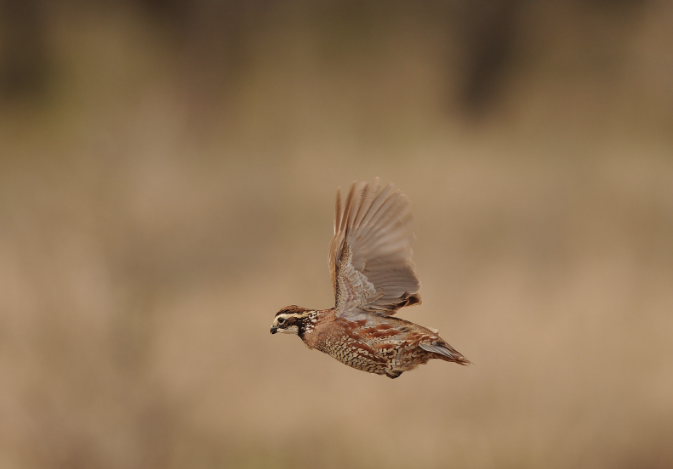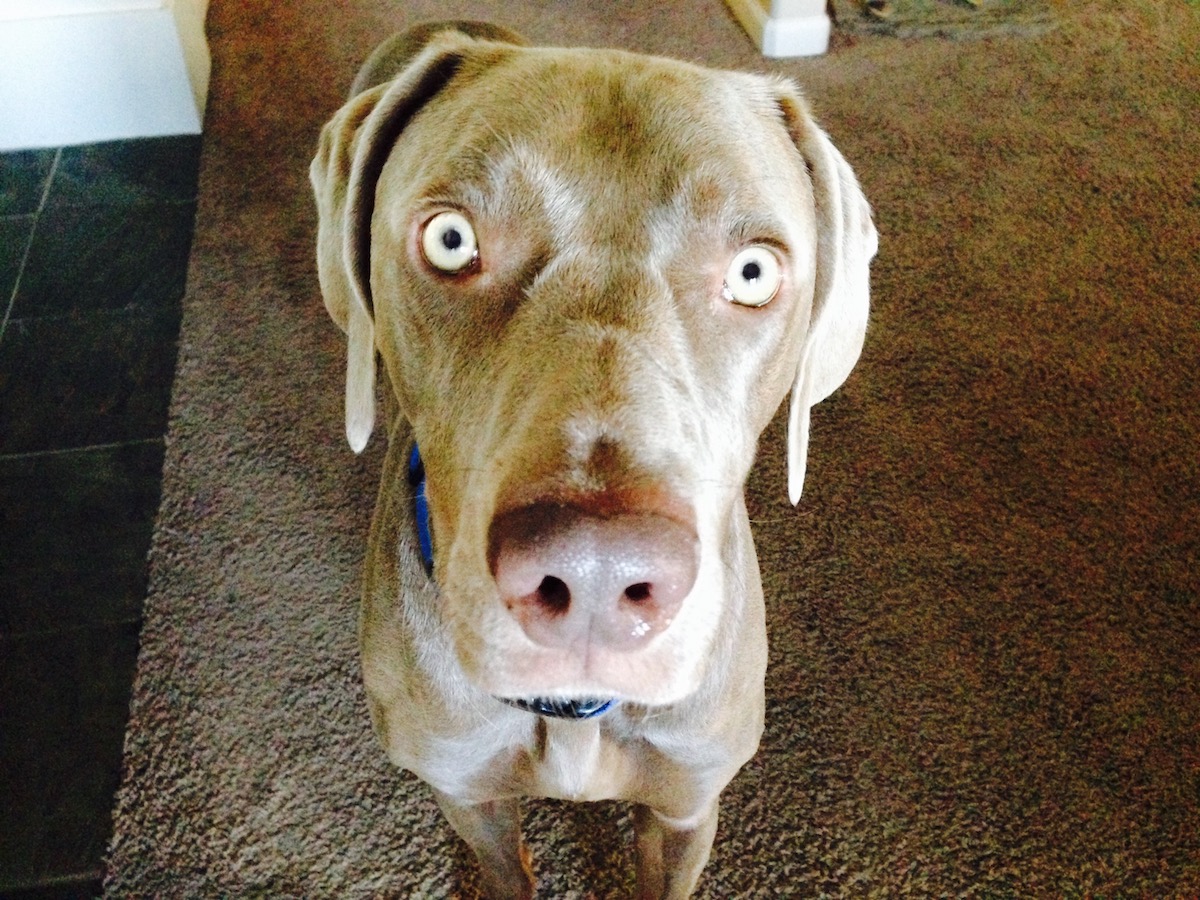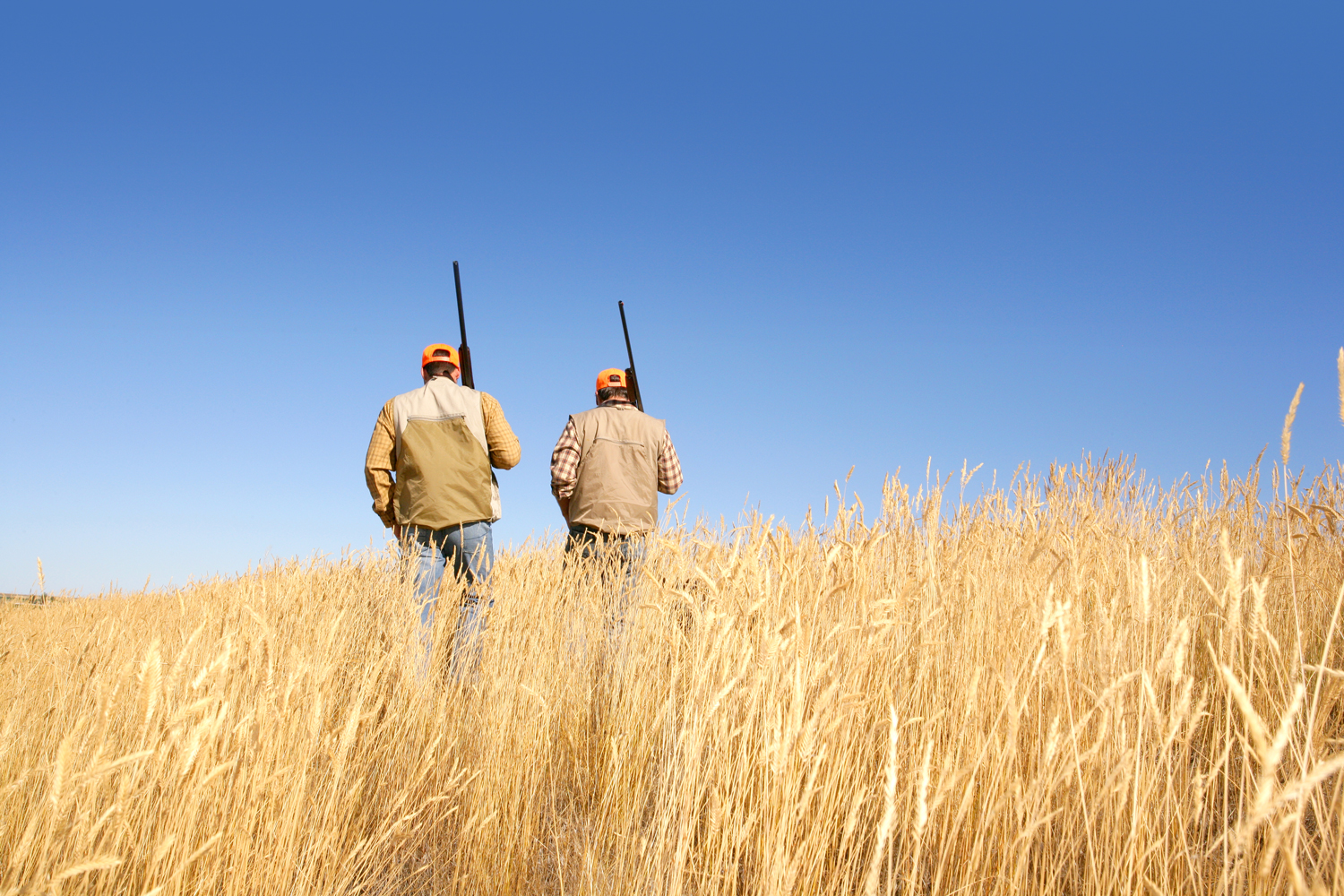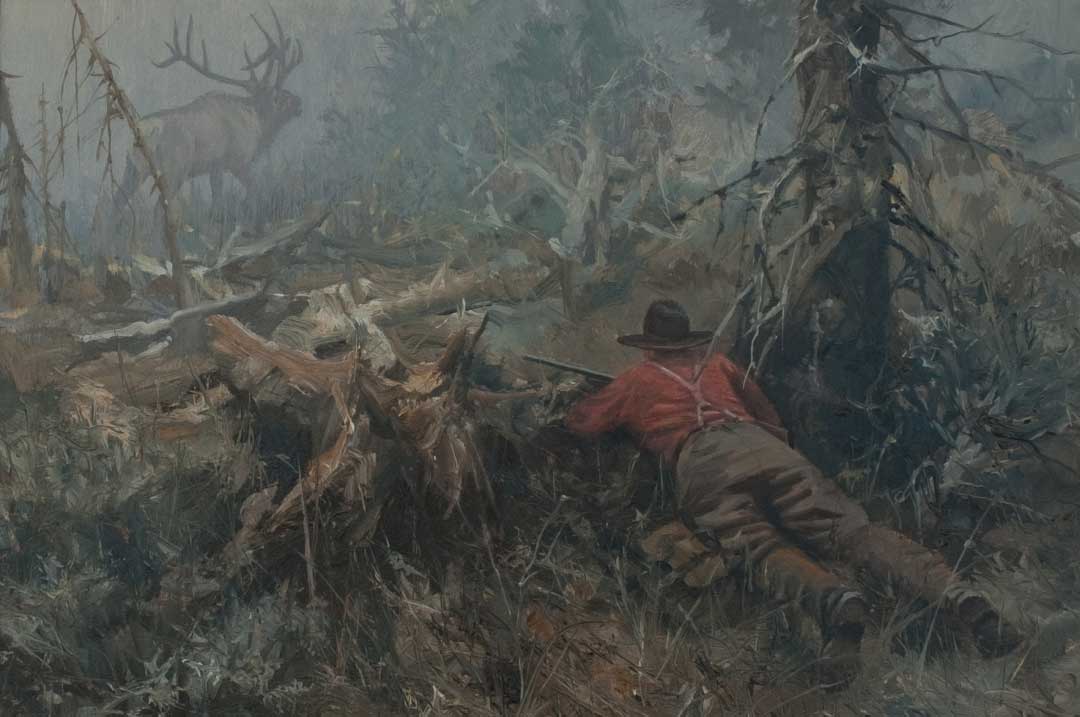Gunners who relish searching for Bob White have doubtless absorbed unnumbered benefits from contact with the revelations and dispensations of nature.
Originally titled “Golden Sedge and Whirring Wings” when it appeared in the October 1930 issue of Field & Stream, this piece graces the pages of The Greatest Quail Hunting Book Ever from Sporting Classics.
Evidence of such benign influence asserts itself from the very cradle of the sport. Age-spotted gun diaries reveal profound thoughtfulness among certain shooting gentry in jotting down seasonal impressions of the family life, table manners and range characteristics of Colinus virginianus.
Treasured prints depict top-hatted and velveteened forebears squinting at proper gunplay behind clean-limbed dogs. Bloodlines, reiterated from obscure hunting strains, are vouched for by today’s high breeding in setters and pointers. On occasional manor walls and above sequestered plantation hearthstones hang rare flintlocks and powder horns dedicated to outmaneuvering Bob’s erratic departures. Many a percussion smoothbore, somnolent in attic rust, is linked in honor to booming yesteryears amid golden sedge and whirring wings. Final verdict is returned, however, in deeply underlying national affection and respect for Bob White as “a fellow of infinite sporting zest.”
Among understanding sportsmen, the esprit de corps of quail shooting demands unerring fairness to the bird. The hunt itself should be approached in a frame of mind aloof from mere heft of the game bag. Frankly, however, I do not agree with pseudo-idealistic blurbings which sigh that starry-eyed straying through scented countrysides is ample reward for a birdless gunner. If one’s mind is receptive to the beauties of frosted pumpkins and vivid sunsets beyond purpling ridges, so much the better. But any hard-going, intelligent shot has a right to fruitful field expectancy. In a vast majority of us lurks an urge for action, an ear for trigger music, and a nose for skillet savor. When those blessings are decently earned, good luck and amen! Let us say, then, that the law has cleared nature’s decks for action. Vernal matings have ripened into strong bevies along many familiar ranges. Beyond wait canvas-coated hosts and eager dogs.
Some days, quail can be found ad lib. At other times, the widest casts of your keenest-nosed dogs fail to strike pay dirt. Many factors are responsible for this raid upon the alibi treasury. In field lingo, your dogs may not “have their noses.” In that of science, and correctly, too, ground temperatures and air currents have them, instead. Warm weather, fatigue, frozen ground, diffused scent particles, or other ills to which dumb dog flesh is heir may have a bad hand. When such happens, make the best of it. Or tie up your quail dogs and turn loose the rabbit hounds.
Through ill luck, good bird range is sometimes barely missed. At others, bad judgment selects or steers a wrong route. Or another shooting party may have slipped in just ahead of yours. Distant gun reports and scattered single-bird finds tell that story. Yet most hunts are over reasonably familiar territories with bevy range reasonably well known. Even then, at times, the curse holds. Again, on unseasonable days, birds are raised apparently for the asking, and from most unexpected covers. By all the laws of the quail prophets they should have been elsewhere. I have even flushed them 30 yards in the wake of a disc plow, widely scattered and feeding peacefully among the hollows of upturned earth.
But before entering unfamiliar territory, the experienced quailer “reads sign” of sky and wind, terrain and water. Bird country, appearing prime to the novice, may analyze arid to seasoned field reasoning. Waves of glistening sedge and acres of matted weeds may size up beautiful but barren, with agrarian outskirts of adjacent planted country getting the call. Steady food supplies and coverts affording quick protection from feathered air raiders are what attract Bob White.
Walking or mounted, the experienced “pottige” hunter’s eyes rove the ground for vermin spoors. Comparatively fresh or faded empty shotgun shells are clues to prior invasions. Feathers, scratchings, droppings, and vocal rejoinders from wood and fields have meanings all their own. Sandy creek bottoms and moist ditch beds reveal telltale tracks. Overly numerous hawks and owls indicate game country. Many a knowing hunter has some sentinel air inspector to thank for a bevy find.
For instance, Hal and I had followed some singles over a hill into a brambled gully. Arriving first, Hal found Bill dog on point. From the ridge, I saw the whole occurrence. A hundred yards below Hal, a big hawk swooped suddenly in, hovered over the thicket fringe, and struck. Ten seconds later, he was flapping upwind with a fat quail dangling. Standing like a statue, Hal let Mr. Hawk beat slowly toward him and, at 30 yards, broke his neck. Alert to a tense situation, he whirled and dropped the flush off Bill’s point. Barring a missing head, the robber bird’s victim was quite intact. With a chuckle about killing two birds with one stone, Hal then attempted to broad jump a wide sand ditch, and missed.
So then, a quail shoot’s scope embraces luck, or lack of it, in judging and selecting routes; dog work and handling, good, bad, or indifferent; personal equipment, proper or unsuitable; and actual gunnery, effective or disappointing. Three methods of contact are in vogue. Old-fashioned, all-day “hoofing it”; horse- or mule-back; and via automobile. The last named is sinister evidence of gasoline’s menace to off-the-road game resources. In skillful hands, a light car penetrates unbelievably remote places. An hour’s horse travel means 15 minutes with gas. If quick finds fail to materialize, the gang chugs off to more distant but fresher fields.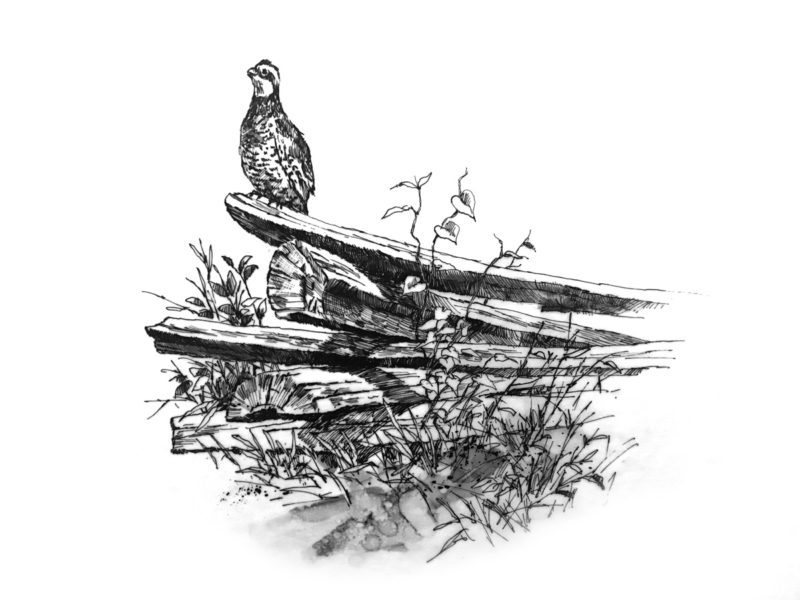
Once discovered, fruitful but unprotected quail country is soon made barren of birds. Bevies are hunted to the last Bob. But along such ranges, decent sportsmen may enjoy a season’s tramping. But unthinking irresponsibles and quail bootleggers know no honor or bag limits. Operations begin by the time the Bobs are barely on their own. Whole bevies are obliterated when hardly fit for the table. It is for such reason that many of our southern states are advancing open seasons on quail to a later date.
Noticeably around the larger cities and towns of our Deep South, deplorable losses in game stocks result from quail bootlegging. Conniving patrons of such despicable butchers leer in enjoyment over this pitiful, illicit contraband from wildlife resources. It is extremely difficult for even trained operatives from state game departments to capture such rogues. Even so, where any vestige of political pull exists with magistrates, conviction is ofttimes a joke. Women are often utilized by these game-bootlegging ghouls to make deliveries. Money changes hands later at the Boss’s office. Negro sharecroppers form “rings” and deliver to city “bird routes,” patronized, strange to relate, by people posing as law-abiding citizen-sportsmen. These Bob White vandals use slow, well-trained dogs and cylinder-bore magazine guns. Bevies are spotted and raked on the ground. Many such miscreants are scattered over the quail’s domain. Their nefarious traffic does more harm than all the rest of the so-called predators put together. Cheap fines are of little avail in such cases. The whipping post would prove far more beneficial.
For all-around pleasure and physical benefit, no method of quail shooting approaches horseback hunting, naturally more prevalent in the rangier and less-fenced southern areas. Aside from private preserves, however, open ground, even in Dixie, is shrinking. Quailing from horseback naturally stimulates one’s dogs; they become bolder and more independent on cast, and more readily catch handling signals. Dog hunting on lost points requires less time. But, walking or riding, dog handling is a one-man job at all times. Nothing more surely mars a shoot than interference with or criticism of the other fellow’s dogs.
But not all dogs “savvy” the mounted hunt. I recall the dismay of a friend whose courageous and well-broken pointer made a holy show of himself the first time he saw his master in the saddle. He howled, whined, short-cast, and gave every evidence of not understanding what it was all about. His flabbergasted owner suggested every ill from high blood pressure to running fits. Toward afternoon, with Don trailing disconsolately, or pointing an occasional rabbit in an effort to square himself, I suggested finishing the affair on foot. With his Boss down and hustling, Don came to life, streaking out and handling more than his share of business without a bobble. But such a defect is easily remedied. Three weeks’ association with plantation horses and mules and Don was a seasoned campaigner.
Again, scattering singles are much more easily marked down from horseback. Incidentally, in the riding (or walking, either, for that matter) shoot, only two should ever dismount for bevy shots. The third man should hold mounts or spot birds. Few men care to gun “three-in-a-crowd” without such a rule in force. One member of the ground squad should remount after the flush, and permit the off gun to come down for singles. Rigidly rotated, such rule permits matters to progress smoothly and with reasonable safety. The thought of weapon safety becomes second nature to experienced hunters.
Under pressure, at times, even second nature slips. Many a novice with good, common sense has had his hair permanently straightened through inexcusable carelessness on the part of some uppish veteran. Shooting “threes” is prohibitively dangerous around thick cover. Two pellets, one in my left cheek near the eye and a second under my scalp, are 25-year-old souvenirs of that remark. Crowding to the shot hampers individual chances, invites ill feeling where it should never prevail, and results in “doubled” kills.
Too, using horses allows ample foot rambling without undue fatigue. The homeward ride, with its sense of fun left behind and good cheer ahead, is ofttimes a day’s most pleasant episode. If you are afoot, five miles from home, with hard going ahead and a heavy game coat, a sturdy mule makes a welcome ally. As one’s mount constitutes an important item of quail shooting equipment, I vote for a saddled mule. When a “jughead” white-eyes an ugly water jump, or woofs some rickety bridge, my advice is yield to the gentleman. Though by nature “onery,” and, under certain conditions, richly deserving the “death of a thousand cuts,” a mule’s sixth sense for shaky business is uncanny.
A few seasons ago, I was shooting birds with Eltinge Warner. We were querried by Bob Tyson’s Arch, a colored savant whose particular duty, among myriad others, made him chargé d’affaires of a valuable motion picture camera. Toward late afternoon, we found ourselves far off the beaten track. Then was discovered the loss of the big cinema from its moorings behind Arch’s saddle. The catastrophe almost stunned him, looming as a major financial disaster. And, infinitely worse, it was up to him to “’splain de case t’ Mister Bob.” A murder charge would have worried him less. As he took the backtrack, Arch flung both arms about Rat’s neck and poured a torrent of conversation into the mule’s long, twitchy ears. About moonrise the darky parted our tent flaps and grinningly handed over the prize.
“Where’d you find it, Arch?”
“’Bout two hun’nerd yards f’um whar us et dinner, suh.”
“Tough time locating it?”
“Well, suh, I was pussonally in er swivet at fus’, but I jes’ laid de case befo’ Rat. I say, ‘Lissen, ol’ mule,’ I say, ‘look ’round he’ah at me.’ I say, ‘Me an’ yu is bofe hooked up in dis mess, an’ de devil ain’ nuthin’ atall t’ whut us gwi’ ketch f’um Mister Bob.’ I say, ‘Ef I gits hell f’um him, why I is sho’ yo’ boss, an’ ol’ sapsucker, yu gwi’ git de same dose f’um me.’ Den I jes’ laid on back. Rat went right on lak he’d corned, an’ dar laid de contrapshun.”
Innumerable sidelines are suggested when riding after Bob White. One should try to reach home around sundown for a bit of rest before the evening meal. Appetite will be toned down, and you’ll sleep better for less food. Visiting hunters should realize, also, that in many cases their hosts have farm duties proportionately as exacting as factory and office routine. Saddle inexperience is far better confessed in the barnyard than later painfully remembered. Minor saddle and stirrup adjustments, necessary but neglected, very easily turn an otherwise pleasant jaunt into drudgery. A hard, rumpled saddle blanket irritates a mount’s healing back. Tie carefully, and preferably high. Always ask if your horse will stand shot. If you toss down your lines, see that they are separated. This spares equipment and prevents a trip or hock burn. If you’ve ever been left far afield, or been interrupted to chase a runaway, you’ll realize the value of some of the above remarks.
Most important, never mount or dismount with a loaded weapon, or even jam one down into your saddle scabbard. This applies particularly to magazine guns, though no type absolves its owner from such negligence. It is quite foolish to claim there is no shell in the barrel, but in the magazine. You can’t continue to outguess memory. Carelessness leads to miscalculation and inevitable accidents. From a lifetime of experience, I made just such a slip three years ago in not checking a friend’s gun, handed me by a negro, just before I mounted. Only sheer luck saved a good dog. But it made the darky swallow his chewing tobacco. Such aftermath is one of life’s darkest moments.
A real bird hunter would about as soon forget his fowling piece as to ride away minus his “pouch” tied behind the saddle. This type of carrier, indigenous to the South, is to the quail shooter what his “possibles sack” was to the old time Mountain Man. I have never seen such a bag displayed in any sporting goods store or catalog. It is homemade, of waterproof canvas or plantation ticking. A long, center-slit receptacle, flaring into capacious pockets at either end. A pouch rides anywhere, if need be, and packs with unlimited capacity. Mess kit and tea kettle; grub and dog food; extra shells, dog leashes, camera, wire snippers, slickers, toilet kit, and even extra clothing make the pouch bag and baggage for any trip. In the field, bird kills are shifted from pockets to pouch, thus lightening shooting coat drag.
Every man to his own method, but I feed my dogs in the morning, in proportion to what I figure it takes to keep me going. Some men expect an animal to burn the wind all day long on a smell for breakfast and a scrap or two grudgingly tossed at lunchtime. Not for mine. Such nonsense and, at times, downright cruelty is as out of place today as the energy-sapping routine of ten miles before breakfast and a mixed ale diet of the pre-Sullivan age. Is it any wonder that hungry dogs bolt a bird or two as days wane?
Many modern advertisements alluringly describe bird dogs that will hunt “all day long for six days in the week.” Such individuals may exist, but not when underfed, and even otherwise, not for long. In these days and times, with well-balanced and nourishing meats and vegetables rationed for dogs, food is as available as one’s own grocery stock. No hunter has an alibi for failure to provide well for his gunning stock.
If you are on horseback, with the starting breakaway a good piece off, by all means couple and lead your dogs. This is imperative if the party is to split. Dogs become excited, mix, and cast away prematurely. Time is lost blowing them in. And, worst of all, their jumping and barking around horses’ heels constitutes 100 percent liability. Many an eager fellow has been kicked head over heels and killed or maimed. If automobiling, watch door closings to prevent paw bruises or fractured dog shins. Never chain a nervous dog in, or to, a car. I have seen one strangled, and two narrow escapes. An ambitious animal, sensing himself marooned when distant guns pop, sits not upon the order of his going. During the ride home, bed your dogs out of the wind. Warm, tired muscles that have gone 20 times farther and faster than yours shouldn’t be exposed anymore than a grand athlete’s tendons.
Examine your animals before and after the shoot. An overlooked trivial limp may hide a thorn-pierced pad or deep burr cut in some tender crease. Don’t forget that a real bird dog has all the heart of a game rooster. A substantial noontime rest will profit guns and dogs. A bit of fire, some tea for sandwich company, and a snooze among sun-warmed leaves pay dividends in dog reserve and steadier weapon handling. And be absolutely certain that your fire is out.
In dry weather, carry a flask for your dogs. They soon learn to come in for a drink from your hat crown. If running fits occur, shade, rest, water applications, and manipulation of belly and back, toward the tail, are the best first aid that I’ve found to dogs so stricken afield.
Bottomlands, bayou banks, brambled drains, and new ground around sloughs are the best bets for bevy finds. On the upland, sparse woods with briared borders, weed belts, and outside plantings of grain and lespedeza are most productive. Around lakes and swamps, birds have a way of sheltering in the timber and feeding out into the corn. When put up, they sail into the thickets far out in the woods. This is the most difficult going, but sportiest of all Bob White gunning.
One hears, nowadays, that quail are becoming educated; that they no longer fan out into the sedge and weeds to be picked off one by one. My hunch is that it is more the lack of cover than sense. Bob White isn’t constitutionally a far flyer. But with so much cleared ground in these times, watch him have to wing sometimes half a mile across an open stretch to find pitching space in the cane jungles. Fortunately, some such hides are invulnerable to men and dogs. The dredge-ditch banks of eastern Arkansas are samples of such protective cover. Invariably, there is a good carryover of bird stocks in such country. Except in preserves, or wide-open territory, a present day’s shoot rarely yields more than a bevy or two of good single-bird shooting. Again, a blessing of today’s game restoration program is the lowered bag limits on Bob White. This takes a tremendous strain off hunting singles. Hunters simply take two or three members from each bevy and are on their way. Thus, extra-large preseason bunches, found one day or missed another, will afford a full-length program of outings during the time limit.
Any quail hunt will do better that makes haste slowly, and too many dogs along are worse than none. At that, bevies can be missed by a hair’s breadth. Last winter, Speed and I looked 15 minutes for a lost bitch. About to ride on, I happened to glance aside and saw her staunchly on point behind a big black stump. We had been within 30 yards of her twice. Afoot or mounted, moving too rapidly is bad practice.
Some dogs possess real bird sense. On the other hand, a veteran may have more than the animal. When neither gunner nor animal is so equipped, the trip, barring sheer luck, is in for some tough breaks. But a knowing bird hunter in good country can, by hard work, impart bird sense to any reasonably intelligent searcher. Constantly going over known range reacts favorably, in time, upon canine images. But of one thing you may be very sure: it requires Bob Whites, continual contacts with them, and patient work to shape any pointer’s or setter’s true destiny.
An ambitious, intent dog is often whistled off productive going through his master’s inexperience in estimating signs of game making or possibility in cover. I have watched good dogs literally stop in dismay, frustrated right at the most critical moment by crowding on or being called off. Give your dog time when a spot diagnoses likely, and let him work on the case. When he points, get to him promptly. Take your time, mentally; size up the dog’s location, and, above all, mind a breeze and the probable whirl-away of the rise. Following singles: again, take your time. Give them a chance to spread scent.
Another bit of advice. Finding yourself in unproductive country, don’t plug blindly ahead. It wears one out and discourages dogs. Sit down and rest a bit. Read some more sign. On very rainy days, avoid the sedges. Bob doesn’t care for soppy going anymore than you do. Try ditch banks or spearheads of thicket. On very cold mornings, start later; give the birds a chance to feed off some distance from their roosts.
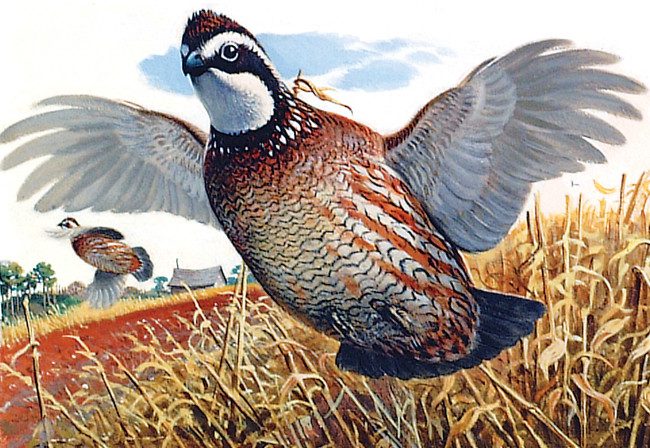
Bobwhite quail vignette by Bob Kuhn, courtesy of the Remington Collection.
For quail shooting afoot, the overly wide, fast dog, even in reasonably close country, becomes the hunted and not the hunter. The merry-tailed fellow of medium range and good nose that hunts to the gun fills the walking shoot’s order perfectly. Range in gun dogs is usually greatly overestimated. Loose field talk hears boastful terms of “half-mile” and “mile” casting. Barring bolting prairie sweepers, actual average range, even in field trials, shrinks amazingly. When the by-and-large, smooth-moving searcher works his ground knowingly 300 to 400 yards away, nothing more need be asked, even when you’re mounted. If you doubt that, sprinkle a 400-yard golf hole with reasonably thick cover and think it over. Over-range to a foot hunter becomes tiresomely ineffective, and is ofttimes quite unfair to the dog.
Aside from its bearing, one way or another, on field trial technique, the average quail hunter (or any other type, for that matter) needs and delights in a prompt, tender retriever, regardless of breed. The daring, finished retriever brings a friendly kinship to the gunning theme. Faithful service, understandingly rendered, wins everlasting affection. Many and many a dead bird is found. And, equally important to game restoration, countless cripples are brought to bag. The chap who fails to cherish and reward his dog for tackling thorns or dangerous ice and water simply lacks humanity and sportsmanship. Have you ever sat late before a low-burning log fire and recalled how the noble animal at your feet risked his life so cheerfully for your fun? If so, then you and I share a sentiment worth owning.
I have followed, shot over, and judged quite a few pointer knights and setter centurions, plumed to the purple. Every bird hunter—and that goes for the breed—secretly dreams and longs to own a royally bred animal, broken to the Queen’s taste and able to win on any circuit of field trials. But in the end, like most of us, he must be satisfied with plain Belle or Jack, and finds in them the traits of a lowlier dogcraft that can be wine to his soul. As years go forward, quail hunters of this nation will live to thank the men of means, their virile and patient trainers and handlers, and the many field trial enthusiasts for what they have accomplished in constantly improving bloodlines in gun dogs, and, along with them, the movement toward game restoration. In the average bird dog, staunchness means everything. But it should not in any case be unnecessarily strained. When your dog points, reach him as quickly as possible. He may get a bad break before you can cross a ditch or hedgerow and be entirely innocent of flushing. Loose stock, a jealous bracemate, the end of cover, or an inexperienced shooting companion may turn the trick.
Brilliant nose accuracy, bold diagnosis of location, tremendous pace and range, under impeccable judging, have yet one acid test. Championships are often decided upon hairline shadings of handling response. Speed, style, bird sense, and loftiness on point tell the judges an old, old story of natural gifts unpolished and gone astray, or of fully developed dog talents. Few great field trial winners have ever reached championship estate by other than a plethora of game contacts. Only intensive bird work ever fully develops any animal’s capacity for greatness, in any sphere. The winning punch is affected between dog and handler by that union of expression termed “handling response.” When close decisions are in the making from judicial saddles, there is the crux.
Local, “cold-blooded” wizards have usually spent their lives from puppyhood among quail, and under masters who, though not always finished trainers, know enough to work their dogs for definite routines. Some dogs, like humans, are born gifted. Others, potentially efficient, languish and pass on without a chance at their biological excuse for existence. When speed, range, and stamina are aligned with brilliant bird sense and handling response, the yardstick of bird dog greatness has been applied by judgment. But what counts with the average chap is his dog’s reaction to such a code of training and companionship. Its understanding of what they are out to enjoy together. In so many words, mutual enjoyment of a day’s gunning.
My taste, and I’ll wager that of many Bob Whiters reading this, runs to a big, hard-bitten pointer or setter—great-chested, high-headed, long-striding—from a well-bred strain of country giants with verve, hardihood, and courage that blazes the sedge and leaves smoke in the hollows. Fellows not overly friendly but with a magnificent sense of understanding and loyalty. Fellows that stride up to a weed patch, trusting high noses for an instant diagnosis. Dogs that spared pace across pastures and then turned loose like coiled springs when their pads re-gripped bird country. Dogs that cast in reluctantly at nightfall, with vinegar enough left to fight like wildcats or shake a few curs along the quarter’s lane. The type that came railroading off a hillside and into an area where potterers and egg-busters were sniffing and creeping, and put them instantly to playing second fiddle. The kind that stalked stiff-legged from point to point among scattered singles. Standing like a sentry until clucked on into whatever action necessary.
Clothing and footgear for quail shooting have long been matters of standardization. Stiff, water-repellent “pants” and shapeless coat dedicated to packing off big bags of birds. Bag limits nowadays, however, are such that packing a dozen or 15 Bob Whites requires a minimum of space. For years I have used a combination game pocket and shell pockets slung on suspenders. Riding or walking, the outfit is ideal. It is best, of course, always to select clothes that will repel cockleburs. But in any case, your costume should fit with the best approach to gunning ease. Just as in duck shooting, too much stress is laid on warmth when bird shooting. Riding or walking, one gets ample body movement, and with even a little too much clothing there is soon discomfort. If your shooting is in thicket country, by all means have your trousers or riding breeches faced with soft, tough leather. And be sure to wear long, ribbed under-drawers in place of shorts. They will save you many a briar cut.
One of the best safety-first measures of quail shooting is a white or light-colored coat, or, certainly, a white hat. The dogs spot them more readily, and around close firing in tight cover, they are marvelous safeguards. Nothing fills the bill, when riding for quail, better than a pair of well-cut breeches and soft-legged boots of the “Botte Sauvage” type. For steady tramping, army last marching shoes, leggings, canvas or spiral, and, above all, lightweight suspenders are best. In low, swampy country, leather boots of any type are at a distinct disadvantage. There are innumerable rubber footgears on the market today that walk well and keep the feet dry. No leather boot is ever any more waterproof than the greasing it gets. And while quail shooting, use a whistle that has more volume than a peanut roaster, and carry a knife, matches, and tiny first-aid kit of tape, lint, aspirin, and iodine. Somewhere along the line they’ll come in handy. And last but not least, a pair of well-fitting gloves. How often, in approaching a shot, have you had to remove some barbed nuisance from your path, and gotten a nasty clip in return?
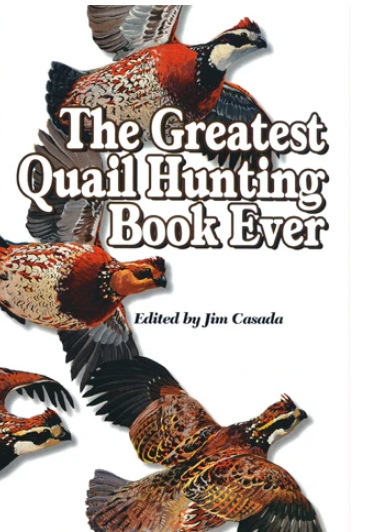 This fascinating anthology showcases 38 wonderful stories from those halcyon days when sporting gentlemen pursued the noble bobwhite quail with their favorite shotguns and their elegant canine companions.
This fascinating anthology showcases 38 wonderful stories from those halcyon days when sporting gentlemen pursued the noble bobwhite quail with their favorite shotguns and their elegant canine companions.
The 368-page book opens with compelling tales by the literary giants from quail hunting’s golden era, including Nash Buckingham, Robert Ruark, Havilah Babcock, Archibald Rutledge and Horatio Bigelow.
The book’s second section presents reminiscences by sporting scribes of the modern era, among them Jack O’Connor, Gene Hill, Joseph Greenfield, Dave Henderson, and Mike Gaddis. The third section is comprised of unforgettable short stories on quail hunting and bird dogs by James Street, Bob Matthews, Dan O’Brien and Caroline Gordon.
Will the sweet sound of whistling wings, the heart-stopping beauty of a sunset point, the timeless partnership of a man and a dog wise in the ways of wild birds ever return? Perhaps, but for now we can rejoice in the fact that we can, through the writings of some of the finest sporting scribes America has ever produced, experience those golden days vicariously. Buy Now

